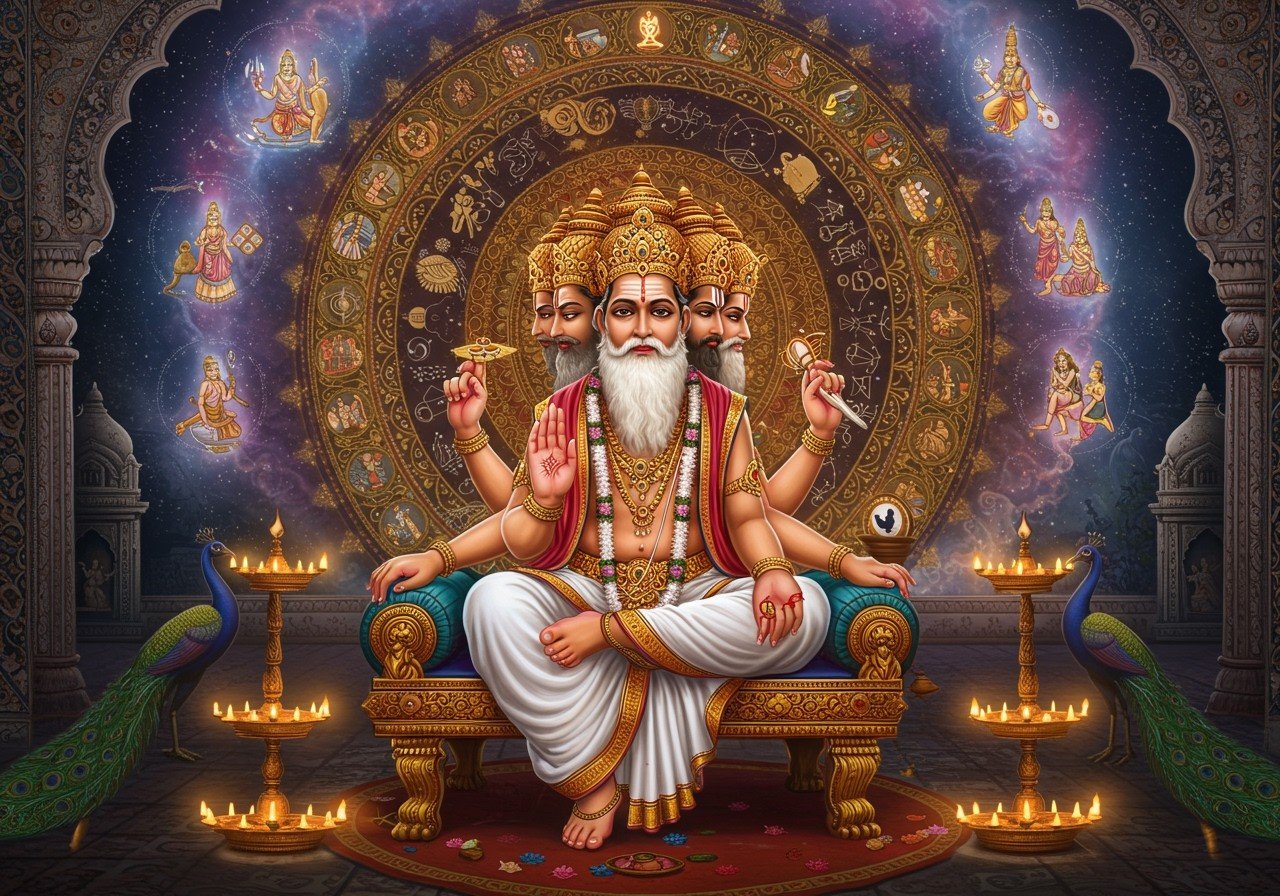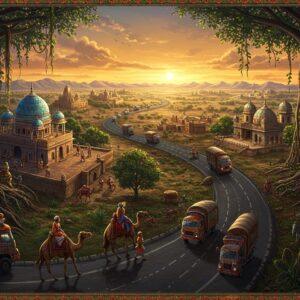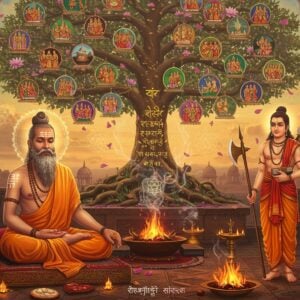
In the rich tapestry of Hindu mythology, Daksha Prajapati emerges as a compelling figure, representing creation, order, and the complexities of familial relationships. His story, woven through ancient texts like the Shiva Purana and Bhagavata Purana, offers profound insights into human nature and the interplay of divine forces. Let’s delve into the life of this fascinating character, exploring his significance and the lessons we can glean from his experiences.
Unraveling the Enigma of Daksha Prajapati
Daksha, whose name itself signifies “able” or “skillful,” plays a pivotal role in the cosmic order. As a Manasputra, a mind-born son of Brahma, the creator god, he holds a revered position among the Prajapatis, the divine agents of creation. Daksha’s origins are shrouded in intriguing narratives. The Mahabharata portrays him and his wife emerging from Brahma’s thumbs, while other texts depict him as a son of Prachetas and Marisha. These varied accounts add to the mystique surrounding his persona.
In Vedic traditions, Daksha is closely associated with priestly skills and the proper execution of sacrifices, underscoring his importance in maintaining cosmic balance. The Rig Veda even suggests a cyclical relationship between Daksha and Aditi, where they emerge from each other, symbolizing the interconnectedness of creation.
The Daksha Yajna: A Turning Point in Mythology
A pivotal event in Daksha’s life is the Daksha Yajna, a grand sacrificial ceremony that becomes a stage for conflict and transformation. Daksha’s decision to exclude his daughter Sati and her husband, Lord Shiva, from this Yajna sets in motion a series of tragic events. Sati, deeply hurt by her father’s disrespect towards her beloved husband, immolates herself in the sacrificial fire.

This act of self-sacrifice has far-reaching consequences. Enraged by Sati’s death, Lord Shiva unleashes his wrath upon Daksha and the Yajna. Virabhadra, Shiva’s fierce emanation, destroys the Yajna and beheads Daksha. Later, however, Daksha is resurrected, albeit with the head of a goat, a symbolic representation of his transformation and newfound humility.
Daksha’s Transformation and Legacy
Following his resurrection, Daksha undergoes a significant change. He seeks forgiveness from Lord Shiva and becomes his ardent devotee. This transformation emphasizes the importance of humility and surrender to the divine will. Daksha’s story reminds us that even the most powerful can succumb to pride and prejudice, but true redemption lies in acknowledging our flaws and seeking atonement.
Intriguingly, Daksha is also linked to the lunar cycle. His curse upon Chandra, the moon god, for favoring one of his daughters over others, explains the waxing and waning of the moon. This narrative connects Daksha to celestial phenomena, highlighting his influence on the cosmos.
Poojn.in: Your Spiritual Companion
As you reflect on the story of Daksha Prajapati and his connection to Lord Shiva, you might be inspired to deepen your own spiritual practice. At poojn.in, you can find a wide range of authentic puja items to enhance your devotion. Consider these offerings:
- Brass Panchmukhi Hanuman Murti: Invite the blessings of Lord Hanuman, a devoted servant of Lord Rama and a symbol of strength and devotion. The five faces of Hanuman represent his multifaceted power. Perfect for your home altar, this murti is available in various sizes.
- Complete Puja Samagri Sets: Poojn offers curated puja kits containing everything you need for various rituals, ensuring convenience without compromising authenticity.
- Brass Kubera Murti: Invite the blessings of Kubera, the god of wealth and prosperity, to your home. Crafted with exquisite detail, this murti is believed to attract abundance and positive energy.
Poojn.in is dedicated to providing high-quality, authentic spiritual products. We understand the importance of maintaining traditional practices in modern life and strive to offer convenient access to genuine items that enhance your spiritual journey. Visit www.poojn.in to explore our complete collection and discover the perfect items to support your devotion. All products are carefully selected and verified for authenticity by experienced pandits.
Frequently Asked Questions About Daksha Prajapati
What is Daksha Prajapati known for? Daksha Prajapati is renowned as a progenitor, a key figure in creation myths, and the father of Sati, whose story is deeply intertwined with Lord Shiva. His tale is one of pride, conflict, and ultimately, redemption.
What led to the Daksha Yajna conflict? The conflict arose from Daksha’s ego and his disapproval of Sati’s marriage to Lord Shiva. His deliberate exclusion of them from the Yajna led to Sati’s self-immolation and Shiva’s subsequent wrath.
What is the significance of Daksha’s goat head? The goat head symbolizes Daksha’s transformation from arrogance to humility. It represents the consequences of his actions and his eventual acceptance of Lord Shiva’s supremacy.
Daksha Prajapati: A Timeless Lesson in Humility
The story of Daksha Prajapati continues to resonate across generations, offering valuable lessons in humility, respect, and the importance of recognizing the divine will. His journey from a powerful creator to a humble devotee serves as a timeless reminder that true strength lies not in dominance, but in surrender and understanding. Daksha’s legacy continues to inspire seekers on their spiritual paths, encouraging them to embrace transformation and seek harmony in their lives.


